Understanding the difference between a seizure and epilepsy is critical for parents. While the terms are often confused, they refer to different medical realities.
- A seizure is a single episode of abnormal brain activity.
- Epilepsy is a chronic neurological disorder involving two or more unprovoked seizures.
Let’s explore the definitions, causes, types, treatments, and key differences to help you better support your child’s health.
What Is a Seizure in Children?
A seizure is a sudden, temporary disruption of electrical signals in the brain. In children, seizures may cause:
- Jerking movements
- Staring spells
- Confusion or loss of consciousness
Think of it as a short circuit in the brain. A single seizure does not always mean your child has epilepsy.
Common Causes of Seizures in Children
Seizures can be triggered by:
- High fever (febrile seizures)
- Head trauma
- Brain infections (e.g., meningitis, encephalitis)
- Low blood sugar or electrolyte imbalance
- Sleep deprivation or extreme stress
- Medication side effects or withdrawal
A one-time seizure often has an identifiable, treatable cause.
Read More Blog: Top 6 Common Pediatric Neurological Conditions
Types of Seizures in Children
Seizures are categorized into two main types:
1. Focal (Partial) Seizures
These begin in a specific area of the brain.
Types of Focal Seizures:
- Focal Aware Seizures (Simple Partial):
- Child remains aware
- May involve muscle twitching or unusual sensations
- Focal Impaired Awareness Seizures (Complex Partial):
- Child may appear confused or unresponsive
- May involve repetitive actions like lip-smacking or hand-rubbing
2. Generalized Seizures
These involve both sides of the brain:
- Absence Seizures: Sudden staring spells
- Tonic-Clonic Seizures: Full-body convulsions
What Is Epilepsy?
Epilepsy is a neurological disorder where a child has two or more unprovoked seizures not linked to a temporary cause. It’s a condition that requires long-term monitoring and treatment.
Causes of Epilepsy in Children
Epilepsy may result from:
- Genetic predisposition
- Birth complications or brain injury
- Developmental disorders (e.g., autism)
- Neurological infections
- Brain tumors or stroke
In many cases, the exact cause remains unknown.
Seizure vs. Epilepsy: Key Differences
| Factor | Seizure | Epilepsy |
| Definition | One-time brain activity disruption | Chronic condition with recurring seizures |
| Cause | Often triggered by fever, trauma, or stress | Often due to underlying brain abnormalities |
| Frequency | Single or isolated incident | Two or more unprovoked seizures |
| Treatment | Treat underlying cause | Ongoing treatment with medication or devices |
| Diagnosis | May not need further treatment | Requires neurological evaluation and long-term care |
How Are Seizures and Epilepsy Diagnosed?
To differentiate between a seizure and epilepsy, doctors use:
- EEG (Electroencephalogram) – Detects abnormal brain waves
- MRI or CT scan – Checks for structural issues
- Blood tests – Identifies infections or imbalances
A child is typically diagnosed with epilepsy after two unprovoked seizures at least 24 hours apart.
Treatment Approaches
Seizure Treatment
- Address the root cause (e.g., infection, fever, low blood sugar)
- May not require long-term medication
Epilepsy Treatment
- Anti-seizure medications
- Ketogenic diet (high-fat, low-carb)
- Vagus nerve stimulation
- Surgical options (in complex cases)
- Responsive neurostimulation
Every child responds differently—personalized treatment is essential.
When Should Parents Seek Medical Help?
- After a first seizure
- If it lasts over 5 minutes
- If your child doesn’t regain consciousness
- If diagnosed with epilepsy
- Follow up regularly with a pediatric neurologist
- Monitor for medication side effects or seizure triggers
Summary
| Topic | Key Takeaway |
| Seizure | Single, possibly triggered brain event |
| Epilepsy | Chronic condition with multiple unprovoked seizures |
| Diagnosis | EEG, MRI, blood work |
| Treatment | Varies based on cause and condition |
| Action | Seek medical help after any seizure |
Understanding the difference empowers parents to respond confidently and get the best care for their child.
Frequently Asked Questions (FAQ)
What’s the difference between epilepsy and a seizure?
Epilepsy is a chronic disorder involving multiple seizures, while a seizure may happen once and not recur. Epilepsy diagnosis usually requires two or more unprovoked seizures.
Can a child have a seizure and not have epilepsy?
Yes. Many children experience seizures due to fever, infection, or head trauma and may never have another one.
How is epilepsy diagnosed?
Doctors look for a pattern of unprovoked seizures, supported by EEG, brain scans, and clinical history.
Can ear infections cause seizures?
Yes. Ear infections can cause high fevers, leading to febrile seizures, which are typically not linked to epilepsy.
Is epilepsy lifelong?
Not always. Some children outgrow epilepsy, especially with early diagnosis and proper treatment.




